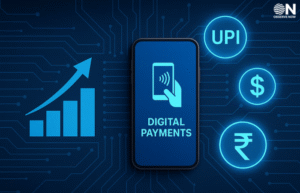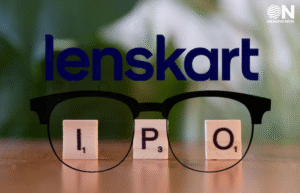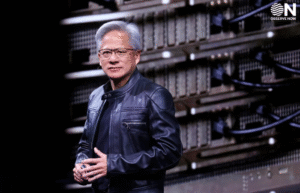In today’s rapidly evolving world, digital technologies have become integral to various facets of life, including education. The integration of these technologies into educational frameworks is transforming traditional teaching methods, making learning more interactive, engaging, and accessible. Digital tools and platforms are enabling personalised learning experiences, where students can learn at their own pace and access a wealth of information and resources at their fingertips.
Embracing technology as a key enabler, the National Education Policy (NEP) 2020 in India has also recognised the importance of digital literacy and digital fluency for students. The policy has laid out ambitious initiatives to integrate educational technology (Ed-Tech) into the education system, empowering students with the necessary skills to thrive in the digital age. This forward-thinking approach aims to create a tech-savvy generation capable of navigating and excelling in an increasingly digital world, ultimately enhancing the quality of education and preparing students for future challenges.
Categories of Digital Tools in Education
Examining the incorporation of digital tools in education requires a clear understanding of the term “digital technology.” Within the framework aimed at ensuring comprehensive access to learning opportunities, digital technology encompasses a diverse range of tools and platforms that enhance the educational experience. Below is an exploration of the various categories of digital technology that are profoundly influencing the education sector:
Learning Management Systems (LMS)
LMS platforms streamline educational experiences by efficiently organising resources and content. Educators can consolidate course materials, assignments, and communications into a cohesive system, simplifying lesson delivery and academic monitoring.
Interactive Learning Software
This dynamic category includes educational apps, simulations, and games designed to engage students deeply while imparting essential knowledge. These tools foster immersive learning experiences, stimulating curiosity and enhancing understanding across subjects.
Educational Apps
These versatile tools encompass language aids, math resources, and comprehensive platforms for educational materials. Accessible on smartphones, tablets, and computers, they support adaptive learning journeys and improve educational outcomes.
Smart Classroom Solutions
Integrating smart TVs, interactive digital boards, projectors, and digital whiteboards, smart classrooms enhance learning environments. These technologies promote real-time interaction and collaboration, fostering engaging and interactive lessons.
Digital Textbooks and E-Books
Offering interactive, portable alternatives to traditional materials, these resources are typically available in PDF format. They eliminate the need for heavy physical books, enhancing accessibility and durability in modern educational settings.
Digital Libraries
Transforming learning spaces, digital libraries provide extensive digital content on tablets, notebooks, and Android laptops tailored for grades 1 through 12. They offer flexible learning opportunities, empowering students to access materials anytime, anywhere.
Adaptive Learning Systems
Utilising data and algorithms, adaptive systems customise learning experiences based on individual student needs. They assess strengths and weaknesses to deliver personalised support, improving academic performance.
Digital Assessments
Tools like quizzes and practice sets conducted via digital devices enable efficient evaluation of student performance. Immediate feedback helps students identify areas for improvement, enhancing learning outcomes through tailored learning paths.
Learning Analytics
Essential for validating educational innovations, learning analytics involves data collection and analysis on student performance and engagement. Educators use this insight to refine teaching methods and curriculum, optimising overall learning outcomes.
Benefits of Technology Integration in Education
The integration of digital technology has profoundly transformed educational practices, offering numerous advantages that greatly enhance the learning experience. This evolution serves as a powerful complement to traditional educational approaches, leveraging various types of digital tools to optimise teaching and learning outcomes and prepare students for the challenges of the modern world. Here are the key benefits of embracing digital technology in education.
Increased Interaction and Engagement
One of the primary advantages of integrating digital technology in education, particularly in classrooms, is its ability to enhance student interaction and engagement significantly. Smart classroom solutions, interactive learning software, and educational applications collectively foster a vibrant and immersive learning atmosphere. This shift empowers students from passive receivers of information to active participants in the educational journey. These interactive and stimulating educational tools encourage curiosity and deepen understanding across a wide range of subjects.
Efficient Learning Resource Management
Digital technology in education is prominently exemplified by Learning Management Systems (LMS), which streamline the organisation and distribution of educational content. LMS platforms centralise the administration of course materials, assessments, and student communication, optimising the teaching and learning process. This approach enhances teachers’ ability to manage educational resources effectively, deliver lessons, and monitor student progress, ultimately benefiting both educators and learners alike.
Flexibility and Reach
Digital technology enhances the flexibility and accessibility of education. Digital textbooks and educational applications are accessible across various devices like computers, tablets, and smartphones. This flexibility allows students to engage in self-directed learning and transform their educational journey. Furthermore, the portability and durability of digital textbooks eliminate the need to carry heavy bags filled with traditional paper textbooks.
Customised Learning
In education, digital technology facilitates individualised learning experiences. Through the use of data and algorithms, adaptive learning systems tailor educational materials to each student’s unique strengths and areas needing improvement. This approach ensures that students receive targeted support to excel, thereby maximising the effectiveness and efficiency of education.
Enriched Digital Content
Digital libraries and Smart ICT laboratories offer students access to a diverse range of digital content, enhancing their educational journey. These resources provide extensive information and interactive elements, empowering students to explore and acquire knowledge independently. Digital libraries enable teachers to augment their curriculum with multimedia materials, engaging students and fostering a deeper understanding of subjects.
Instant Feedback
An additional benefit of integrating digital technology in education is the transformation of assessments into digital formats. Digital assessments and learning analytics provide teachers and students with immediate feedback. Tools for digital assessment, including practice sets and exams, offer prompt and relevant evaluations of student performance. This feedback enables teachers to better support their students by adjusting their teaching methods and curriculum and helping students identify areas for improvement. Moreover, digital assessments help ensure accuracy in tracking students’ learning progress.
How Technology Helps Teachers and Supports their Development
Technology is becoming increasingly integral to supporting teachers and advancing their professional development. It offers a wealth of benefits that enhance instructional effectiveness and streamline administrative tasks. Digital tools provide educators with access to a diverse range of instructional resources, including interactive lessons, multimedia content, and educational apps. These resources enable teachers to create engaging and differentiated learning experiences that cater to the needs and interests of their students.
Moreover, technology simplifies classroom management through Learning Management Systems (LMS) and classroom management software. These tools automate tasks such as attendance tracking, grading, and lesson planning, allowing teachers to allocate more time to direct interaction with students. Adaptive learning technologies further enhance teaching practices by analysing student data to make distinctive educational content. This tailored approach helps educators address individual learning styles and abilities, thereby improving student engagement and academic performance.
In addition to supporting instructional delivery, technology provides continuous professional development opportunities for teachers. Online platforms offer access to a wide range of professional development courses, workshops, and collaborative networks. These resources enable educators to stay abreast of evolving pedagogical practices and leverage technological innovations in their teaching. Furthermore, technology facilitates collaboration among teachers, allowing them to share resources, collaborate on lesson plans, and participate in virtual learning communities. This collaborative environment fosters peer learning, creativity, and innovation in teaching practices, ultimately benefiting both teachers and students alike.
Conclusion
Digital technology in education serves as a transformative force, benefiting students and teachers alike. For students, it enhances learning through interactive tools and tailored experiences, fostering engagement and deeper understanding. Meanwhile, for teachers, digital tools streamline administrative tasks and offer continuous professional development opportunities, enabling them to deliver more effective and individualised instruction. By embracing these advancements, educators can navigate the complexities of modern education, ensuring that every student receives the support needed to succeed in a digitally driven world.
Author – Praveen Singh, CEO, AASOKA by MBD Group
Disclaimer: The views expressed in this article are solely those of the author and do not necessarily reflect the opinions or policies of ObserveNow Media. The author is solely responsible for ensuring the accuracy, completeness, and validity of the information presented, encouraging readers to independently verify and seek professional advice if needed.






















